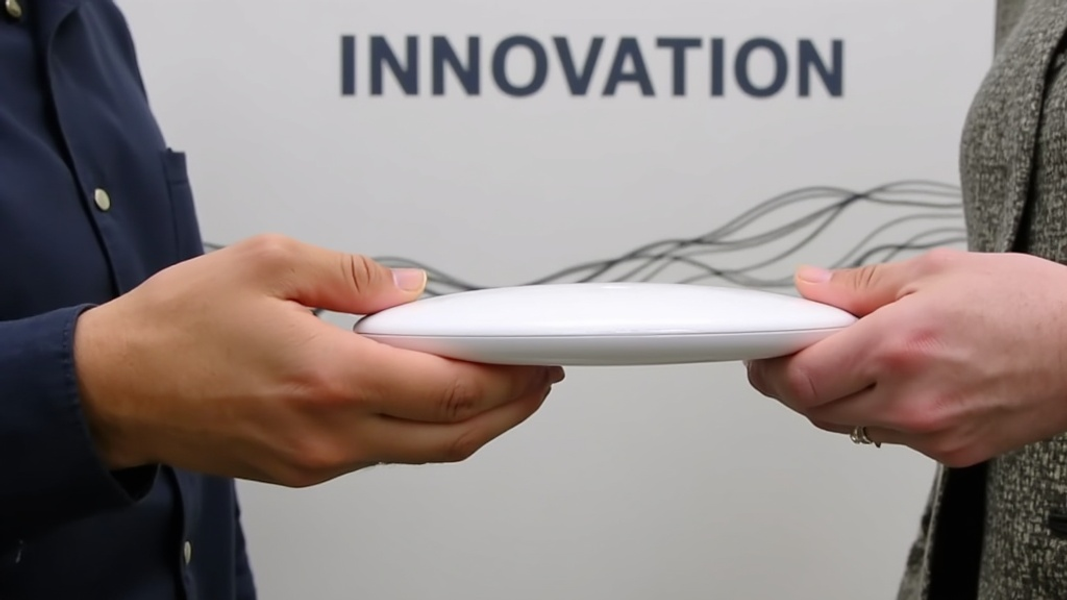
Introduction
Are you curious about who drives the success of new products and technologies? Have you ever wondered why some innovations take off quickly while others struggle to gain traction? The answer often lies with early adopters. These forward-thinking individuals play a crucial role in the life cycle of new products and ideas. In this post, we'll explore what early adopters are, why they matter, and how businesses can engage with them effectively.
Defining Early Adopters
Who are early adopters?
Early adopters are the first group of people to use a new product or technology after its initial release. They're not the inventors or the very first users (those are called innovators), but they're quick to jump on board when something new hits the market. These individuals are often seen as trendsetters in their social circles and industries.
Early adopters have a keen interest in innovation and are willing to take risks on unproven products. They're typically tech-savvy and enjoy being at the forefront of new developments. This group is crucial for businesses because they provide valuable feedback and can help spread the word about new products.
Characteristics of early adopters
Early adopters share several key traits that set them apart from the general population. They tend to be:
- Risk-takers: They're comfortable trying new things, even if there's a chance of failure.
- Influential: Many early adopters have large social networks and are respected for their opinions.
- Tech-savvy: They often have a deep understanding of technology and stay updated on the latest trends.
- Problem-solvers: Early adopters are quick to spot how new products can address existing issues.
- Feedback-oriented: They're usually eager to share their experiences and suggestions with product creators.
Understanding these characteristics helps businesses identify and engage with early adopters more effectively.
The Origins of the Term
Dr. Everett M. Rogers and "Diffusion of Innovations"
The concept of early adopters wasn't always part of our business vocabulary. It was introduced by Dr. Everett M. Rogers in his 1962 book "Diffusion of Innovations." Rogers, a communication theorist and sociologist, studied how new ideas and technologies spread through cultures.
In his research, Rogers noticed that not everyone adopts new ideas at the same time. He identified distinct groups of people based on how quickly they embraced innovations. Early adopters were one of these key groups.
Rogers' contribution to innovation theory
Rogers' work went beyond just naming groups. He developed a comprehensive theory about how innovations spread. This theory has been applied in fields ranging from agriculture to public health to technology.
Rogers' innovation adoption curve became a fundamental concept in marketing and product development. It helps businesses understand the lifecycle of their products and how different consumer groups interact with new technologies over time.
The Adoption Curve Explained
Overview of the adoption curve
The adoption curve, also known as the diffusion curve, shows how a new product or idea spreads through a population over time. It typically follows an S-shaped curve, starting slow, then accelerating, and finally leveling off.

This curve is crucial for businesses to understand. It helps predict how a product might perform in the market and guides marketing strategies for different stages of the product lifecycle.
Five stages of the adoption curve
Rogers identified five main groups in the adoption process:
-
Innovators (2.5% of the population): These are the first to try new products. They're risk-takers and often have connections to scientific and technical communities.
-
Early Adopters (13.5%): This is our focus group. They're opinion leaders who are comfortable with new ideas but more connected to the mainstream than innovators.
-
Early Majority (34%): This group adopts new ideas before the average person but after they've been proven by early adopters.
-
Late Majority (34%): These individuals are skeptical of change and only adopt new ideas after they've become commonplace.
-
Laggards (16%): The last to adopt new technologies, often resistant to change and may only do so when absolutely necessary.
Each group plays a role in the spread of new ideas, but early adopters are particularly important for businesses launching new products.
The Importance of Early Adopters for Businesses
Early adopters are more than just quick buyers. They play several crucial roles in a product's success:
Providing valuable feedback
Early adopters often use products in ways the creators didn't anticipate. Their feedback can be invaluable for improving the product. For example, when Twitter first launched, early adopters started using the @ symbol to reply to each other. This user-driven innovation became a core feature of the platform.
Generating initial revenue
New products often struggle to gain traction. Early adopters provide the initial sales that can keep a company afloat during this critical period. This early revenue can fund further development and marketing efforts.
Boosting credibility and social proof
When respected individuals or companies adopt a new product, it signals to others that the product is worthwhile. This social proof can be a powerful marketing tool. For instance, when early adopters in the tech industry started using Slack, it quickly gained credibility as a business communication tool.
Accelerating product adoption
Early adopters often become evangelists for products they love. They tell their friends, write reviews, and share on social media. This word-of-mouth marketing can significantly speed up the adoption process.
Entrepreneurs looking to leverage early adopters can find valuable strategies for validating their startup ideas on platforms like FastWaitlist.
Strategies for Attracting Early Adopters
Engaging early adopters requires a thoughtful approach. Here are some effective strategies:
1. Identify your target early adopters
Not all early adopters are the same. Identify the specific group that's most likely to benefit from your product. Are they tech enthusiasts? Business professionals? Health-conscious consumers? Understanding your target helps tailor your approach.
2. Create a compelling value proposition
Early adopters are willing to take risks, but they still need a reason to choose your product. Clearly communicate how your product solves a problem or improves their lives in a unique way.
3. Offer exclusive access or benefits
Early adopters often enjoy feeling special. Offer them exclusive features, early access, or special pricing. This not only attracts them but also makes them feel valued.
4. Leverage social proof and influencer marketing
Partner with influencers or thought leaders in your industry. Their endorsement can significantly boost your credibility among potential early adopters.
5. Provide excellent customer support
Early adopters expect some issues with new products, but they also expect responsive support. Make sure you're ready to address their concerns quickly and thoroughly.
6. Use content marketing to educate and engage
Create content that showcases your product's innovative features and potential applications. This could include blog posts, videos, or interactive demos.
7. Offer incentives for referrals
Encourage early adopters to spread the word by offering rewards for successful referrals. This taps into their influential nature and expands your reach.
Tools like FastWaitlist can help create engaging waitlist pages to capture early adopter interest and validate product ideas efficiently.
Case Studies: Successful Early Adopter Strategies
Tesla's Roadster launch
Tesla masterfully leveraged early adopters when launching their first car, the Roadster. They targeted tech-savvy, environmentally conscious individuals who could afford a luxury electric vehicle. By offering a limited production run and emphasizing the car's cutting-edge technology, Tesla created a sense of exclusivity that appealed to early adopters.
The strategy paid off. Early Roadster owners became passionate advocates for Tesla, helping to build buzz for future models. This word-of-mouth marketing was crucial in establishing Tesla as a leader in electric vehicles.
Dropbox's viral referral program
Dropbox used a different approach to attract early adopters. They created a referral program that offered extra storage space to users who invited friends. This tapped into the early adopters' desire for exclusive benefits and their tendency to share new technologies.
The program was hugely successful. Dropbox's user base grew from 100,000 to 4 million in just 15 months. Early adopters not only used the product but actively promoted it, driving rapid growth.

These case studies show how understanding and engaging early adopters can significantly impact a product's success.
Challenges and Considerations
While early adopters are valuable, there are challenges in working with this group:
Managing expectations
Early adopters are often willing to overlook minor issues, but they still have high expectations. Balancing their desire for cutting-edge features with the realities of product development can be tricky.
Balancing feedback with vision
Early adopter feedback is crucial, but it's important not to lose sight of your product vision. Not all suggestions will align with your long-term goals. Learning to filter and prioritize feedback is key.
Conclusion
Early adopters are vital to the success of new products and technologies. By understanding who they are and how to engage them, businesses can accelerate their growth and improve their offerings. Whether you're a startup or an established company, leveraging early adopters can be a powerful strategy for innovation and success.
FAQs
What percentage of the market do early adopters represent?
According to Rogers' adoption curve, early adopters represent about 13.5% of the market for a new product or technology.
How are early adopters different from innovators?
While both groups are quick to adopt new technologies, innovators are the very first users, often involved in product development. Early adopters come next, acting as opinion leaders who help spread new ideas to a wider audience.
Can a business survive without early adopters?
While it's possible, it's much more difficult. Early adopters provide crucial early revenue, feedback, and word-of-mouth marketing that can be essential for a new product's success.
How can I identify early adopters for my product?
Look for individuals who are passionate about your product category, active in relevant online communities, and have a history of trying new products. Surveys and market research can also help identify potential early adopters.
Do early adopters always become long-term customers?
Not necessarily. Early adopters are often looking for the next new thing. While some may become loyal customers, others may move on to newer products. The key is to use their initial support to build momentum and attract the early majority.
